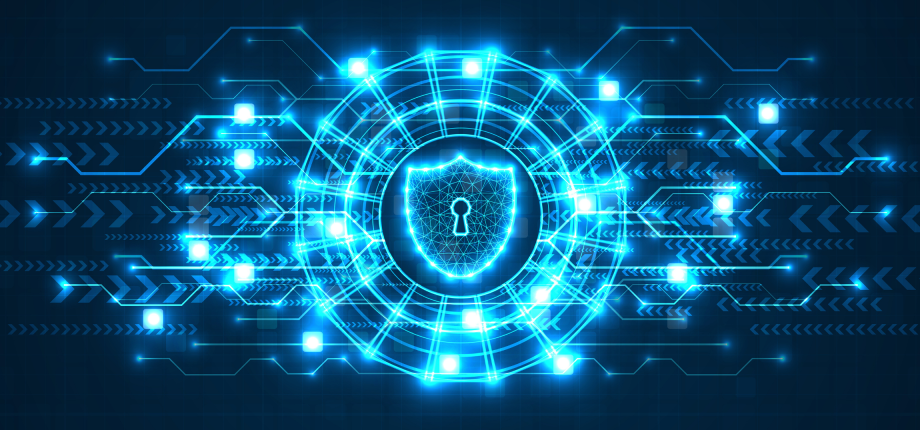New York, NY – Artificial Intelligence (AI) is rapidly transforming the landscape of cybersecurity, offering powerful tools for detecting, predicting, and neutralizing cyber threats. As cyberattacks grow increasingly sophisticated, organizations are turning to AI to enhance their defense systems, with AI-powered security solutions leading the charge in safeguarding sensitive data, networks, and digital infrastructures.
However, as much as AI is a force for good in cybersecurity, it also presents a new and dangerous weapon in the hands of cybercriminals. With the rise of AI-driven attacks, experts are urging a balanced approach to ensure that both defensive measures and offensive strategies evolve in tandem. The accelerating arms race between AI-powered defense systems and AI-enhanced cyberattacks is forcing both cybersecurity professionals and tech companies to rethink their approach to digital security.
This press release explores the duality of AI’s role in cybersecurity, highlighting how the technology is being used for both good and ill, and discusses the growing need for adaptive, cutting-edge AI solutions to counter the ever-evolving threat landscape.
Key Highlights of AI’s Role in Cybersecurity:
- AI in Advanced Cybersecurity Measures: Fighting Fire with Fire
The implementation of AI tools in cybersecurity has revolutionized the industry by enabling organizations to respond to threats more rapidly and effectively. Traditional cybersecurity methods, which rely heavily on human oversight and manual detection, are struggling to keep up with the speed, scale, and sophistication of modern cyberattacks. This is where AI comes in.
AI-powered systems, particularly those leveraging machine learning and data science techniques, can now analyze vast amounts of data in real time to identify patterns, anomalies, and potential threats. These AI-driven threat detection systems are continuously learning from past incidents, which allows them to detect and neutralize previously unseen threats faster than ever before.
One of the most significant advancements is the integration of AI into network monitoring and endpoint security. AI models can analyze network traffic, monitor user behaviors, and identify suspicious activity based on patterns learned from historical data. When a potential threat is detected, the AI system can immediately respond by isolating affected systems, alerting administrators, and even taking corrective actions such as blocking malicious IP addresses or disabling compromised accounts.
Moreover, AI-driven systems can also enhance traditional methods like firewalls, intrusion detection systems, and encryption tools, making them more adaptive and capable of handling emerging threats in real time. This allows businesses to have a more proactive security stance, rather than simply responding to attacks after they’ve occurred. - The Growing Concern Over AI-Powered Cyberattacks
While AI presents a major advantage in defending against cyber threats, it’s also increasingly being used by cybercriminals to launch more advanced and harder-to-detect attacks. As the cost of sophisticated cyber tools decreases and AI technology becomes more accessible, attackers are increasingly adopting AI for their malicious activities.
AI is being used in a range of attacks, from phishing schemes to malware development. For example, AI algorithms can now generate highly convincing phishing emails that are tailored to specific individuals or organizations, increasing the likelihood that a recipient will fall victim to the scam. These AI-powered phishing campaigns analyze a target’s digital footprint—such as social media activity, work history, and personal interests—to craft messages that are more likely to trick the victim into clicking a malicious link or downloading an infected attachment.
Additionally, AI-powered malware can adapt and evolve in real time to avoid detection by traditional security systems. Unlike conventional malware that follows a static code path, AI-driven malware can modify its behavior to evade antivirus software and intrusion detection systems, making it significantly more difficult to neutralize. This capability is a game-changer for cybercriminals, who can now create self-replicating attacks that grow and evolve as they spread throughout a network.
The rise of AI-powered cyberattacks raises serious concerns about the future of cybersecurity, as traditional defense mechanisms are becoming increasingly ineffective against these highly adaptable threats. In response, cybersecurity experts are calling for a more holistic approach that combines both defensive AI models and offensive countermeasures to fight back against cybercriminals’ use of AI. - AI-Driven Threat Prediction Systems Gaining Traction
As organizations continue to grapple with the complexity of modern cyber threats, AI is being leveraged not only for real-time threat detection but also for predictive analytics. AI-driven threat prediction systems analyze historical data and patterns to forecast future attacks, providing businesses with valuable insights on where vulnerabilities may arise and when attacks are most likely to occur.

These predictive systems can analyze millions of data points, including user activity logs, system performance metrics, and even global threat intelligence, to identify emerging threats before they become full-blown attacks. By using advanced machine learning techniques, AI can learn from past incidents and predict trends, allowing organizations to deploy preventative measures or increase vigilance at critical points in their networks.
The ability to predict attacks before they happen can significantly reduce the time and resources spent on reactive defense strategies. In sectors like finance, healthcare, and government, where the stakes are especially high, predictive AI is becoming an invaluable asset in the cybersecurity toolkit. By understanding attack vectors and likely targets, organizations can take proactive steps to bolster their defenses and prevent breaches before they occur.
- The Ethical Dilemma of AI in Cybersecurity
While the use of AI in cybersecurity offers clear benefits, it also raises important ethical and privacy concerns. One of the biggest challenges in implementing AI-driven security systems is ensuring that they don’t infringe on individual privacy or civil liberties. Many AI tools used for threat detection and behavior analysis rely on tracking and monitoring user activity, raising questions about data privacy and the potential for abuse.
As cybersecurity systems become more reliant on AI, businesses and governments must address concerns related to transparency, consent, and accountability. For instance, some AI models used in monitoring systems might unintentionally flag innocent behavior as suspicious, leading to false positives or even wrongful identification of individuals or organizations as threats. This can lead to privacy violations and reputational damage, particularly in industries where trust and confidentiality are paramount.
Moreover, AI-driven systems may unintentionally exacerbate biases in security measures, as they learn from historical data that may already be skewed by factors such as geographic location, social demographics, or historical behavior patterns. To mitigate this risk, developers must ensure that AI models are trained on diverse datasets that are free from bias and designed to prioritize fairness and equality. - The Future of AI in Cybersecurity: A Double-Edged Sword
Looking ahead, it’s clear that AI will continue to play a pivotal role in both advancing cybersecurity measures and enhancing the capabilities of cybercriminals. As technology evolves, the battle between AI-driven defenses and AI-powered attacks will likely intensify, requiring cybersecurity experts to continuously adapt and innovate.
The future of AI in cybersecurity will involve a balancing act, where both defense mechanisms and offensive strategies evolve hand-in-hand. The development of AI tools that can detect, predict, and neutralize threats in real time will be essential to keeping pace with cybercriminals. But to remain ahead of the curve, cybersecurity companies will also need to develop offensive capabilities—AI-powered countermeasures that can neutralize the threat of AI-driven cyberattacks before they gain traction.
Ultimately, the success of AI in cybersecurity will depend on collaboration between governments, tech companies, and cybersecurity professionals. The rapid evolution of both offensive and defensive AI technologies requires a unified, multi-faceted approach to digital security, one that involves not only technical innovation but also regulatory frameworks, ethical guidelines, and user awareness.
For more insights into the latest trends in AI tools and how they are shaping the future of cybersecurity, visit TechThrilled.
To explore further developments in AI News and tech news, check out our Press Release section.
About TechThrilled
TechThrilled is your go-to source for all things tech, from AI tools and data science to the latest developments in cybersecurity, blockchain, and more. Our goal is to provide our readers with the most relevant and timely news, helping them stay informed and ahead of the curve in an ever-evolving tech landscape.
This press release covers the dual aspects of AI in cybersecurity—its significant advantages in defense and the emerging threats posed by AI-powered attacks. As cybercriminals become more sophisticated, AI will play an increasingly important role in combating these advanced threats. However, the need for balance and ethical considerations is critical to ensuring the security and privacy of users worldwide.
